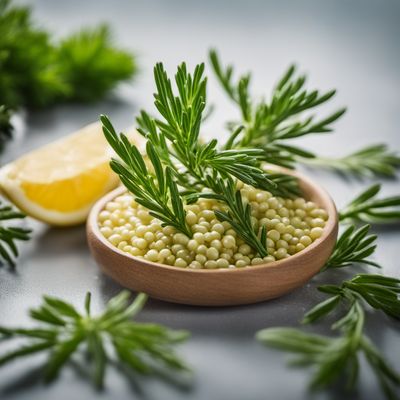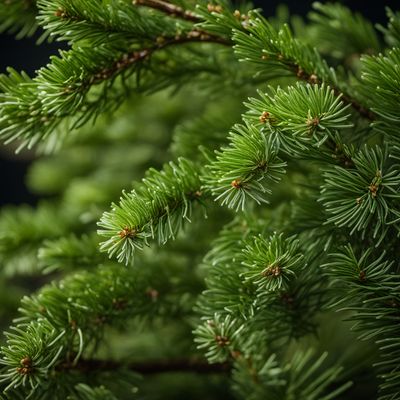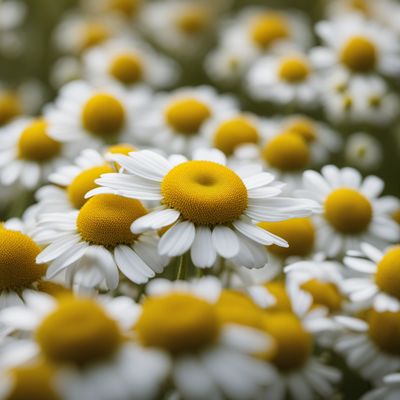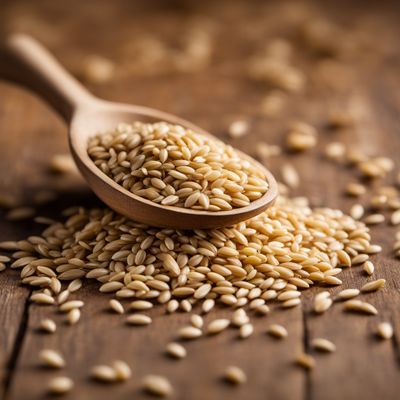
Ingredient
Herbal infusion materials from any other parts of the plant
Nature's Healing Brews
Herbal infusion materials from any other parts of the plant, such as leaves, flowers, or stems, are used to create flavorful and aromatic infusions. They can range from delicate and floral to robust and earthy, depending on the specific plant used. These ingredients are often sought after for their potential medicinal properties and are commonly used in teas, cocktails, and various culinary preparations.
Origins and history
The use of herbal infusion materials dates back centuries, with different cultures harnessing the power of plants for their healing properties. Ancient civilizations like the Egyptians, Greeks, and Chinese utilized herbal infusions for medicinal purposes. Today, these ingredients continue to be an integral part of traditional medicine and culinary practices worldwide.
Nutritional information
Herbal infusion materials are rich in antioxidants, vitamins, and minerals, making them a healthy addition to one's diet. They can provide a natural boost to the immune system and aid in digestion. The exact nutritional composition varies depending on the plant used.
Allergens
Some individuals may be allergic to specific herbal infusion materials, so it is important to be aware of any potential allergies or sensitivities before consuming them.
How to select
When selecting herbal infusion materials, opt for organic or sustainably sourced options to ensure the highest quality. Look for vibrant colors, intact leaves or flowers, and a strong aroma. Avoid any materials that appear wilted, discolored, or have an unpleasant odor.
Storage recommendations
To maintain the freshness and potency of herbal infusion materials, store them in airtight containers away from direct sunlight, heat, and moisture. This will help preserve their flavors and aromas for an extended period. Consider labeling the containers to easily identify each ingredient.
How to produce
Growing herbal plants at home is a rewarding way to have a fresh supply of infusion materials. Choose plants that thrive in your climate and provide the necessary care, such as proper sunlight, watering, and soil conditions. Harvest the leaves, flowers, or stems when they are at their peak.
Preparation tips
Herbal infusion materials can be used in various ways, such as steeping them in hot water to create flavorful teas, infusing them in oils or vinegars for culinary purposes, or incorporating them into cocktails and mocktails for a unique twist. Experiment with different combinations to discover your favorite flavor profiles.
Culinary uses
Herbal infusion materials are widely used in the culinary world, adding depth and complexity to dishes, beverages, and desserts. They are commonly found in teas, herbal remedies, cocktails, soups, sauces, marinades, and baked goods.
Availability
Herbal infusion materials can be found in various regions around the world, as different plants thrive in different climates. Some popular examples include chamomile from Europe, hibiscus from Africa, lavender from the Mediterranean, and lemongrass from Southeast Asia.
More ingredients from this category » Browse all

Lapacho (infusion bark)
The Healing Elixir from the Forest

Fir (infusion shoots)
Exploring the Aromatic World of Fir Infusion Shoots

Dwarf mountain pine (infusion shoots)
The Aromatic Essence of Dwarf Mountain Pine

Quassia (infusion bark, wood)
Bitter Elixir from Nature's Pharmacy

Juniper (infusion bark, wood, shoots)
Exploring the Essence of Juniper: From Bark to Shoots

Fleawort (infusion seeds)
"Nature's Digestive Aid: Unveiling the Power of Fleawort Infusion Seeds"

Sour cherry (infusion stems)
The Tangy Elixir: Sour Cherry Infusion Stems

Chamomile (infusion seeds)
"The Soothing Elixir: Unveiling the Magic of Chamomile Infusion Seeds"

Lignum vitae (infusion bark, wood)
"The Mighty Lignum Vitae: Nature's Healing Power"

Purging cassia (infusion fruits)
The Detoxifying Spice: Purging Cassia

Cocoa (infusion husks)
The Essence of Cocoa Infusion Husks

Blond psyllium (infusion seeds, husks)
The Fiber Powerhouse: Unveiling the Secrets of Blond Psyllium